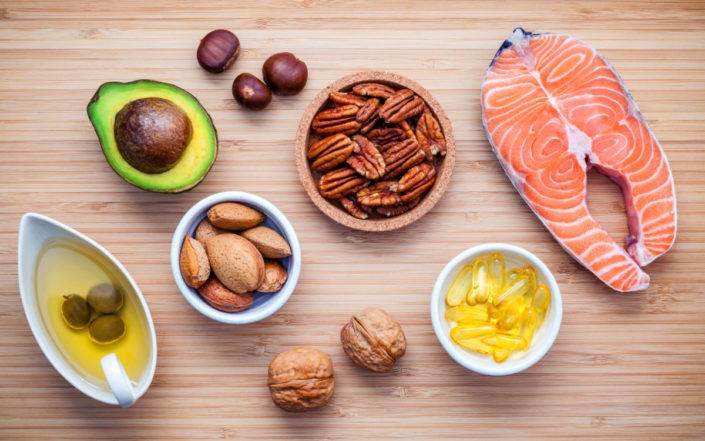The Value of Fats in Your Pregnancy Diet
Fats are an essential part of a healthy diet, but some fats are better for you than others. Your goal (whether you are pregnant or not) is to ensure that you get adequate “good” fats in your diet while minimizing “bad” fats. Dietary fats in your pregnancy diet
Some fats (and the fatty acids they contain) are especially important during pregnancy because they support the development of your baby’s brain and eyes – before and after birth. Fats also help the placenta and other tissues to grow, and studies show that some fats can help prevent premature birth and low birth weight.
What Fats Eat During Pregnancy
There are four types of fat in foods: monounsaturated, polyunsaturated, saturated fat and trans fats. Each type of fat is made up of a combination of fatty acids, so fat usually does not fall into just one of these categories. Palm oil and lard, for example, are about half monounsaturated and half saturated, with a little polyunsaturated fat. But for the most part, you can follow these guidelines for which fats to avoid and eat in moderation:
Monounsaturated fats are found in olive, canola and peanut oils, as well as in olives, avocados, walnuts and nut butter. They are considered “good” fats because they are best for lowering cholesterol.
 Polyunsaturated fats are also beneficial. They contain omega-3 fatty acids, such as DHA and ALA (which are essential for the healthy development of your baby) and omega-6 fatty acids. Omega-3s are found in cold water fish, flaxseed oil, nuts and canola oil, and omega-6s are found in sunflower, cottonseed oils, Corn, and Soybeans. (Soybean oil, found in many vinaigrettes and processed foods, also contains omega-3.)
Polyunsaturated fats are also beneficial. They contain omega-3 fatty acids, such as DHA and ALA (which are essential for the healthy development of your baby) and omega-6 fatty acids. Omega-3s are found in cold water fish, flaxseed oil, nuts and canola oil, and omega-6s are found in sunflower, cottonseed oils, Corn, and Soybeans. (Soybean oil, found in many vinaigrettes and processed foods, also contains omega-3.)
Fish can be an excellent source of omega-3 fatty acids, and pregnant women are encouraged to eat 8 to 12 ounces of seafood per week. But some types of fish contain contaminants like mercury. Choose seafood rich in DHA and low in mercury, such as salmon, anchovies, sardines, and herring.
Many monounsaturated and polyunsaturated fats contain vitamin E, an important antioxidant often missing in the typical American diet.
Saturated fats fall into the category of “bad” fats. Eat as little as possible and limit them to less than 10% of your total calories. Saturated fats are found in high-fat meats, whole milk, and 2 percent, tropical oils (such as palm kernel and coconut), butter and lard. Saturated fats are generally solid at room temperature, unlike unsaturated fats.
Trans fats (also called hydrogenated and partially hydrogenated fats) should be avoided as much as possible. These fats, which are generally solid at room temperature, are found in fried foods and in some types of margarine. They are also used in certain packaged foods – such as crackers, cookies, and chips – to extend the shelf life of these products. Read the nutrition facts label to find the amount of saturated and trans fats in a product, but keep in mind that trans fats are listed only if there are more than 0.5 grams.
A diet high in saturated fat or trans fats can increase your cholesterol and can put you at risk for heart disease. Studies show that saturated and hydrogenated fats can also be related to other health problems, such as cancer and diabetes.
Do not fight if you give yourself fried chicken or a bag of chips on occasion. Simply try to replace unhealthy fats with healthy fats as often as possible.

